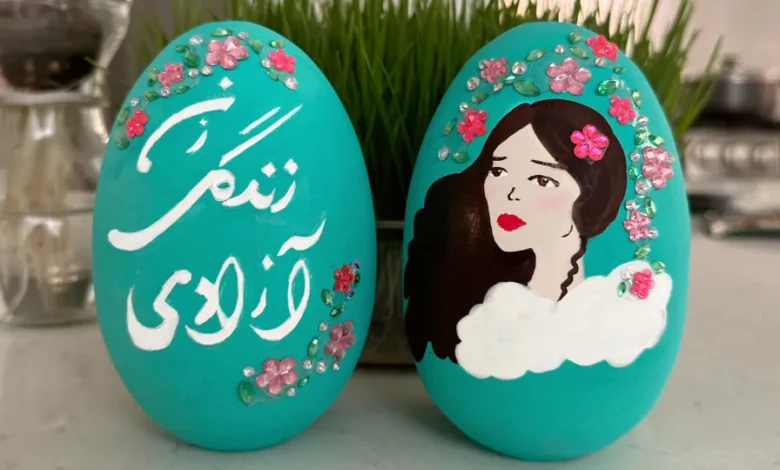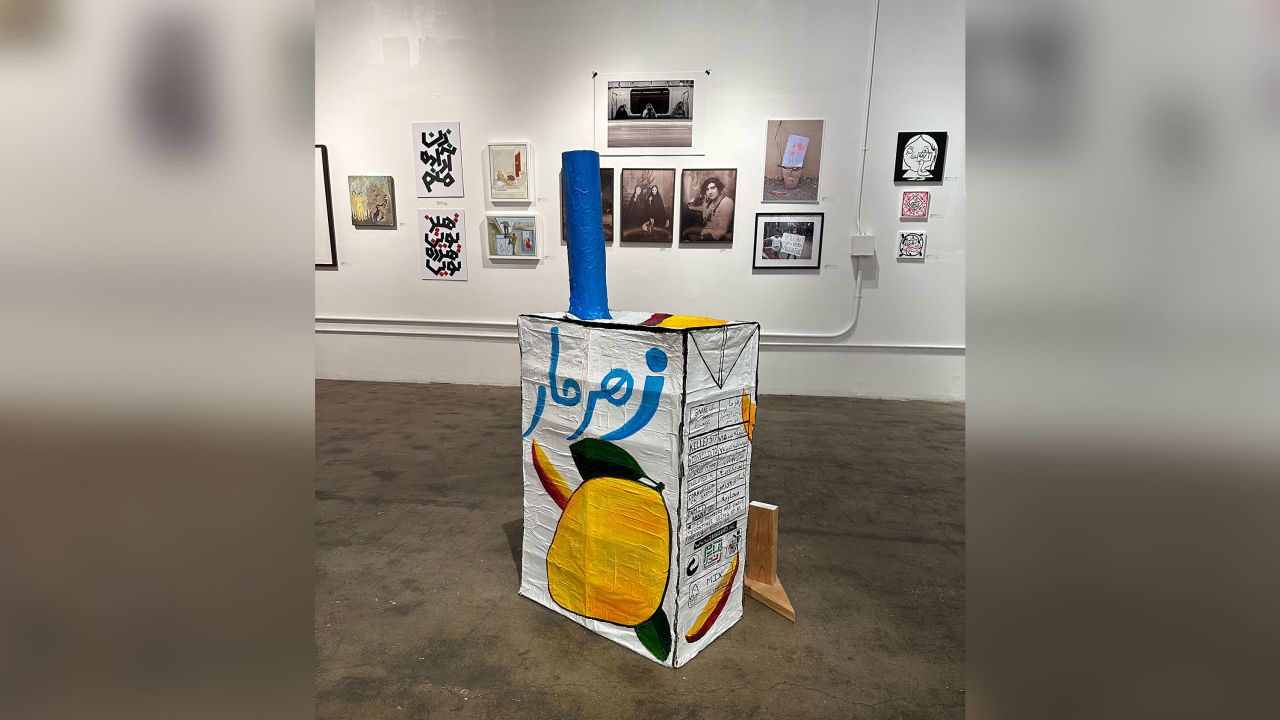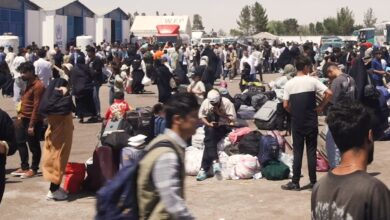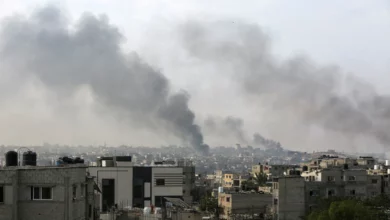
Every spring, Mona Gorjestani eagerly awaits the arrival of Nowruz.
“I have wonderful memories of preparing for Nowruz with my family,” the San Francisco Bay Area resident said. “When I was younger, it was definitely a bragging point to my American friends.”
Persian New Year, which is celebrated on spring equinox and began this year on March 20, is one of the most joyous occasions on the calendar for her and millions of people across the globe. Observers of the holiday typically start preparing weeks in advance, partaking in spring cleaning rituals and arranging their haft-sins, the traditional centerpiece of seven talismans beginning with the letter “s” that signifies rebirth and renewal.
Growing up, Gorjestani’s parents made sure that Nowruz was a special and fun time for her and her friends. She has fond memories of getting together with Farsi school classmates to paint eggs as part of haft-sin preparations.
But this time around, 28-year-old Gorjestani – like many other Iranian Americans – hasn’t been in a celebratory mood.
This is the first Nowruz, or “new day” in Farsi, since protests sparked by the death of 22-year-old Mahsa Jina Amini, who died last September while in custody of Iran’s morality police. Nearly 500 people have been killed in protests across Iran since, and at least 109 protesters are currently at risk of execution, death penalty charges or sentences, according to January data from the Norway-based Iran Human Rights NGO (IHRNGO). (CNN cannot independently verify these figures.) The events of the past six months have cast a dark shadow on the holiday.
“This is a weird Nowruz,” Gorjestani told CNN.
Iranian Americans CNN spoke to feel a sense of mourning and helplessness for those in Iran facing the government’s violent crackdown on protesters. They say it’s difficult to celebrate their ancient traditions when there’s so much suffering in Iran.
A moment of deep reflection
Dr. Shahryar Heydari, a professor of mathematics and president of Kanoon Persian Cultural Center just outside of Atlanta, said the community center had reservations about holding Nowruz events this year given the current situation in Iran. Iranians have many customs around death, and celebrating at a time when so many people have been killed might have been frowned upon.
But as it turned out, members of the community wanted to come together and celebrate one of their time-honored traditions, Chaharshanbe Soori – the ancient fire festival held on the eve of the last Wednesday of the year. Participants jump over a bonfire to symbolize the purification of one’s self in order to allow for new possibilities and prosperity in the coming year.
“Us making this decision to go ahead and hold the event is because of people’s demands,” Heydari said. “We’re not forcing it on them, they want it. They demand it from us, and we serve the community.”
For many Iranians worldwide, this Persian New Year is more a moment of deep reflection than a celebration of what is to come. Whether they ultimately partake in any festivities, many Iranian Americans said that the ongoing unrest has reconnected them to their roots and galvanized their identity.
“Since Mahsa Jina Amini’s death, I realized that the Iranian in me lives much more strongly and deeply,” Dr. Shabnam Salehezadeh, who left Iran when she was 18, told CNN. “I did not realize how deeply my ties are embedded in my heart and in my soul.”
Salehezadeh, who spearheaded the curation of an art exhibit in New York celebrating the protesters in Iran, said that she has felt a sense of “oneness with all of the people in the streets protesting.”

Others were initially unsure of how to speak up and show solidarity with the people of Iran but felt compelled to do something.
“At first, I didn’t quite understand what space that I would take up,” said Cyrus Veyssi, a queer and nonbinary Iranian American content creator whose posts often feature their Iranian-born parents. Veyssi, a vocal LGBTQIA advocate, felt it was just as important to speak up about what has been happening in Iran as it has been to address other topics they are passionate about.
This year Veyssi is opting for a more intimate celebration of Nowruz and spending time with their parents.
Finding light in the darkness
It has been challenging for many Iranian Americans to celebrate Nowruz and the promise of a new day in the face of the dark realities of the past six months. Instead of coming together for the sake of celebrating, like they might have in previous years, they feel a duty to stand with their fellow Iranians overseas as well as with one another.
“Since all this started, I felt more like the closest I’ve ever felt to being Iranian,” said Dr. Neda Pirooz, a childhood friend of Gorjestani’s. “I would go through moments where I was like, ‘Oh, I feel like I’m more American than I am Iranian.’ But during this time, I just felt so connected to my people and I felt the pain for the people.”
Although many Iranian Americans are planning to scale back on Nowruz festivities, some said that this Persian New Year is a reminder of what the holiday actually represents.
“Knowing that Iranian people are actually taking this as a moral responsibility to celebrate lessens my guilt, and I’m happy to support them in celebrating our beautiful tradition,” Salehezadeh said.

Heydari said the Iranian American community in Atlanta has felt compelled to find light in the surrounding darkness.
“I think people throughout the world have come to the conclusion that celebrating these cultural events is our duty,” he said. “And if we don’t do that, we have pretty much lost to the forces that oppose.”
As the protests in Iran continue, this Nowruz has highlighted the ways Iranian Americans have been able to find a new sense of kinship with each other.
“Before, there was a big divide between people in Iran and people outside Iran, people that spoke Persian, people that didn’t speak Persian,” said Leyla Shams, who moved with her family from Iran to Dallas when she was a toddler and runs Chai and Conversation, an online Farsi language school. “Now, everybody is united.”
She pointed to the ongoing protests taking place across North America and around the world. “We see the diaspora showing up in droves to go to these protests and really caring.”
Many Iranian Americans say they hope for a better future for their compatriots. They emphasized that that future depends on what the people inside Iran want.
“I just want whatever the people of Iran want,” Gorjestani said. “I want to support them and raise awareness to what they want. I’m nobody to say what they should have or shouldn’t have.”
Despite her initial reservations about celebrating this year, Gorjestani said this holiday has been especially meaningful – and she still opted to observe at-home traditions such as preparing her haft-sin.
“This Nowruz feels less superficial,” she said. “It’s a celebration of what could be.”




